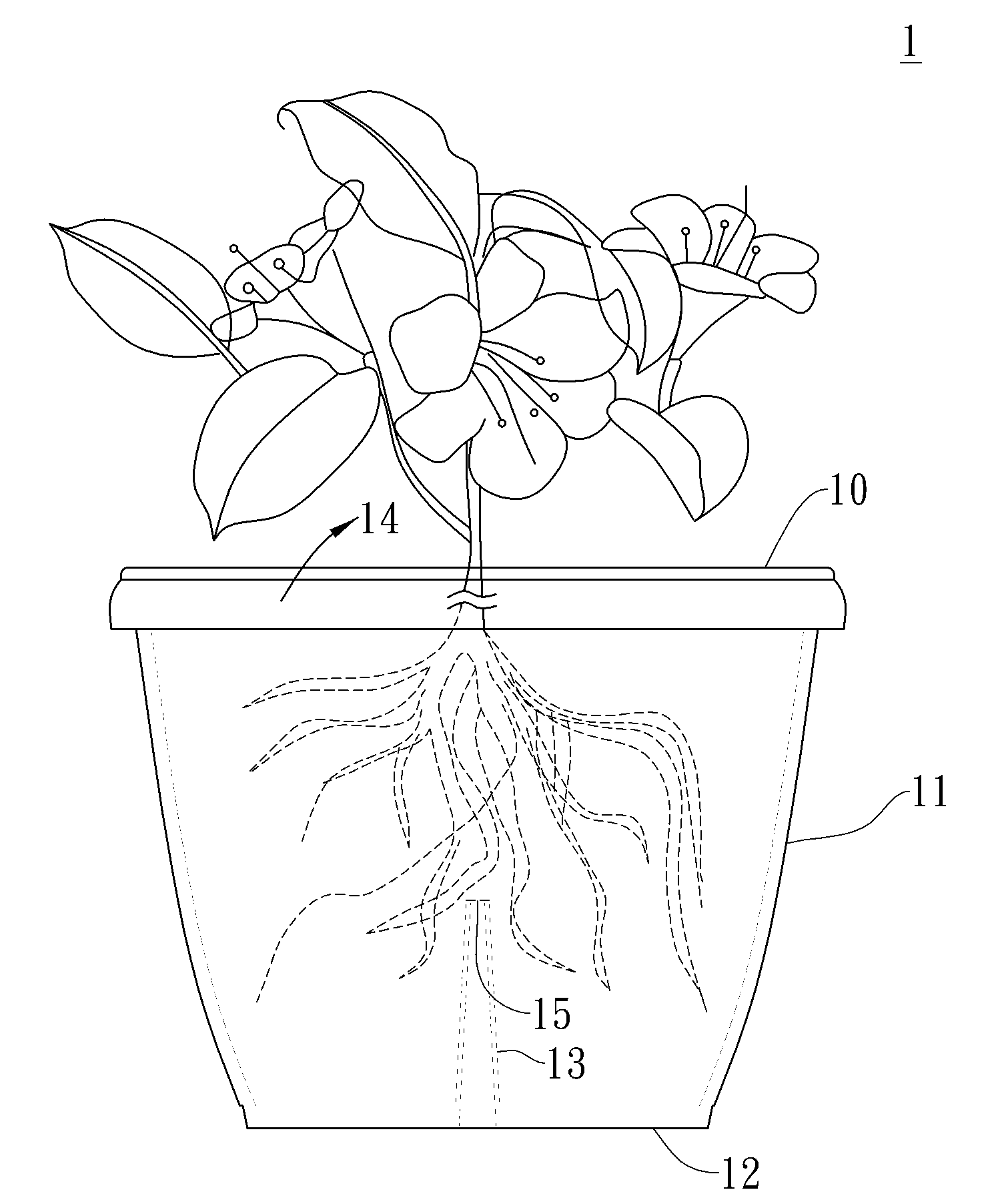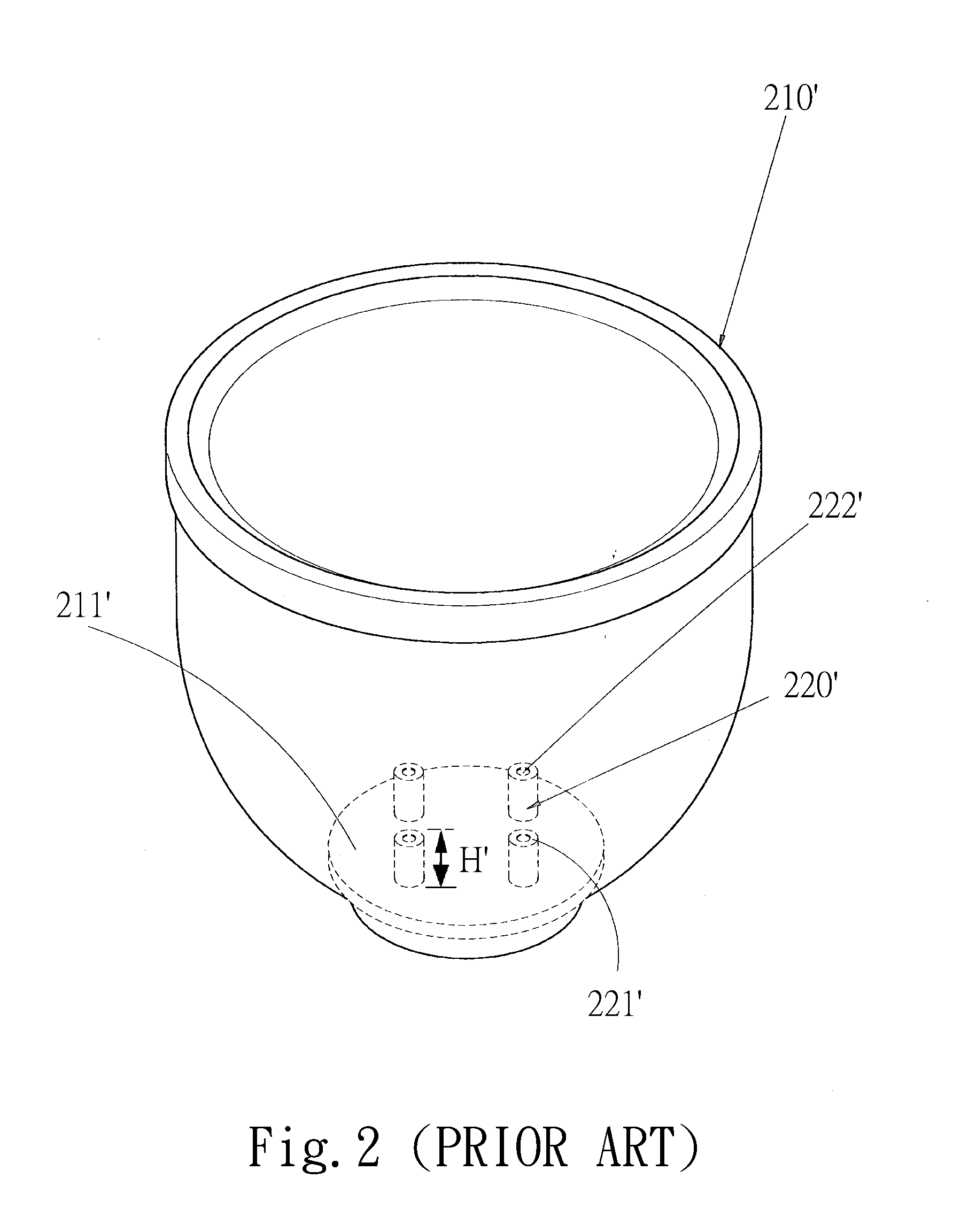Plant pot with elevated ventilation hole
- Summary
- Abstract
- Description
- Claims
- Application Information
AI Technical Summary
Benefits of technology
Problems solved by technology
Method used
Image
Examples
first embodiment
[0035]FIGS. 4A to 4C are schematic representation views showing a plant pot in accordance with the present disclosure. In this embodiment, referring to FIG. 4A, the plant pot 1 is constructed by a pot section 10, which has a truncated conical shape. The pot section 10 is constructed by a side wall 11 and a bottom wall 12. The side wall 11 is extending from and surrounding the bottom wall 12, such that the side wall 11 and the bottom 12 together define an accommodation space 14 for receiving soil, water and plants therein.
[0036]As shown in FIG. 4A, the bottom wall 12 is provided with a ventilation section 13 extending from the bottom wall 12 and toward the inside of the accommodation space 14. The ventilation section 13 is hollow, and is initially, e.g. upon being manufactured with an open hole or an enclosed end, at a height, H, which is smaller than that of the side wall 11, distal to the bottom wall 12. In some embodiments, the distal end 131 of the ventilation section 13 is eithe...
third embodiment
[0043]FIG. 6 shows a schematic representation view of a plant pot in accordance with the present disclosure. The plant pot 3 of this embodiment is similar to the one as shown in FIGS. 4A to 4C. The plant pot 3 comprises a ventilation section 33 has a cylindrical shape. The plant pot 3 further includes a water collecting reservoir 37 positioned at the bottom of the plant pot 3 for collecting excess water flowing out of the plant pot 3 through the ventilation hole 35 when water is poured into the plant pot 3.
[0044]Compared to the conventional plant pots, the present disclosure provides an environment and condition more similar to those in nature, in such a way that the moisture of the soil increases as it gets deeper, while the soil in traditional plant pots dry faster on both the top and at the bottom because both ends are exposed to the air.
[0045]The present disclosure is able to preserve more water in the pot than traditional ones, resulting in less watering frequency is needed in ...
PUM
 Login to View More
Login to View More Abstract
Description
Claims
Application Information
 Login to View More
Login to View More - R&D
- Intellectual Property
- Life Sciences
- Materials
- Tech Scout
- Unparalleled Data Quality
- Higher Quality Content
- 60% Fewer Hallucinations
Browse by: Latest US Patents, China's latest patents, Technical Efficacy Thesaurus, Application Domain, Technology Topic, Popular Technical Reports.
© 2025 PatSnap. All rights reserved.Legal|Privacy policy|Modern Slavery Act Transparency Statement|Sitemap|About US| Contact US: help@patsnap.com



